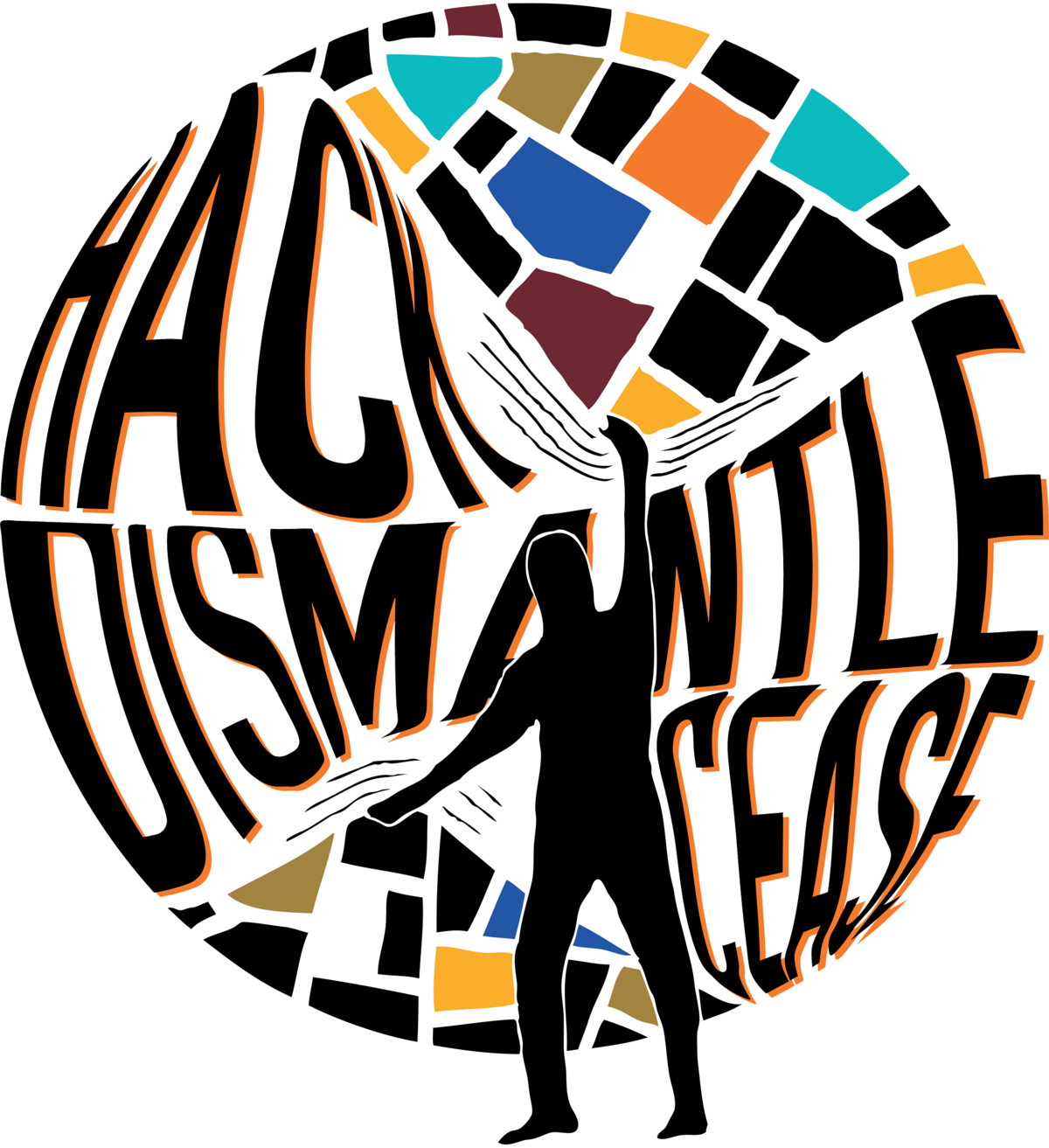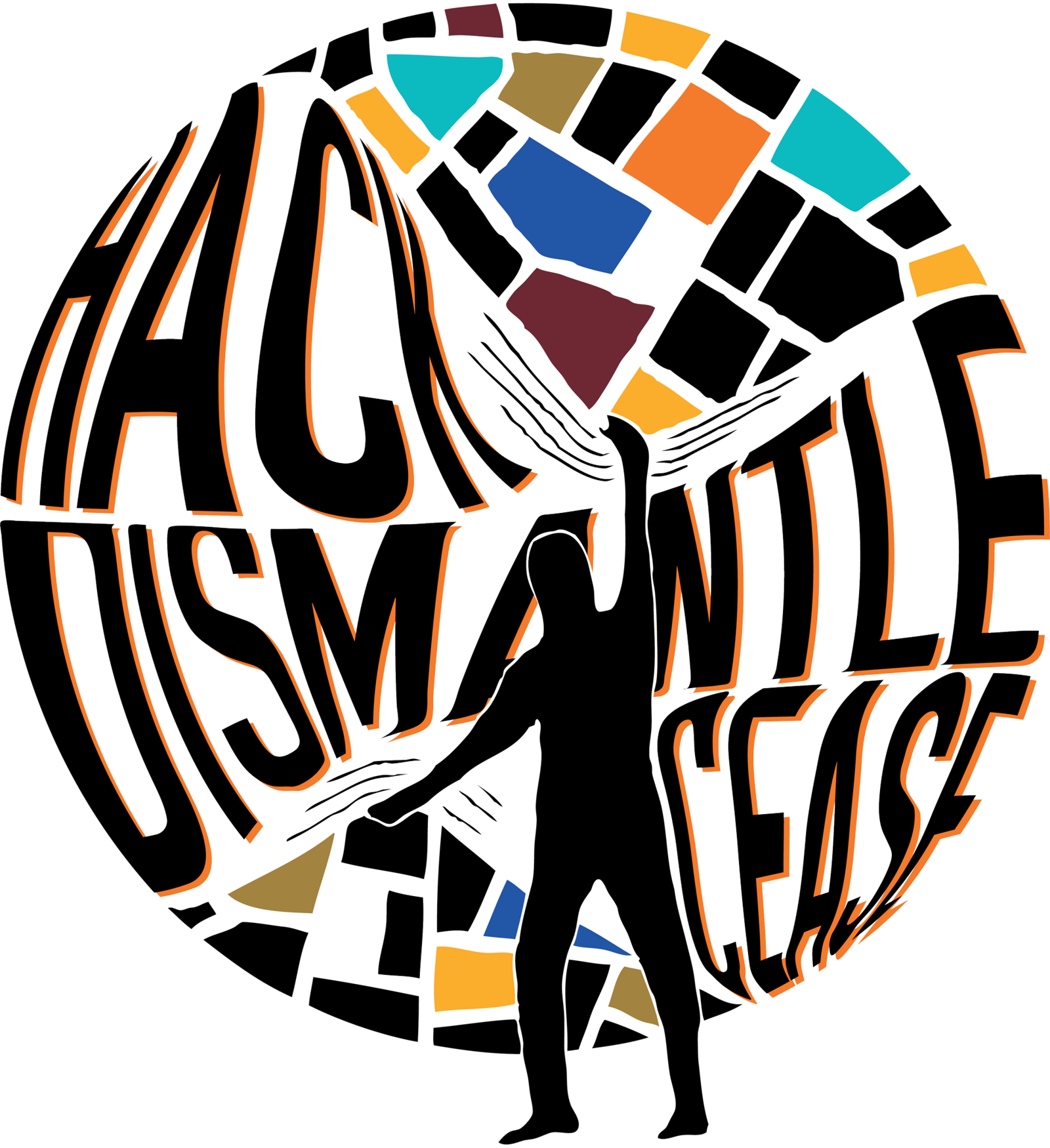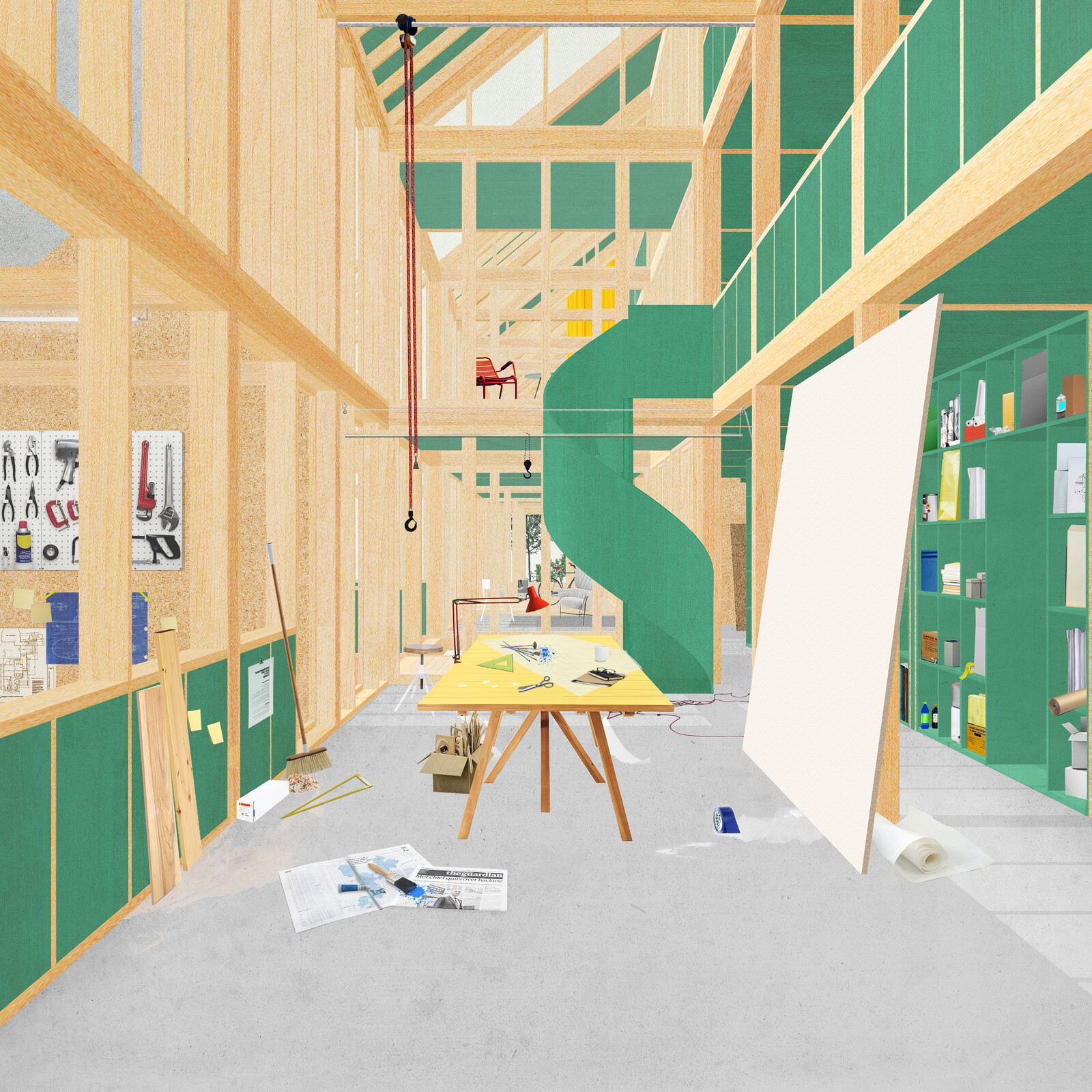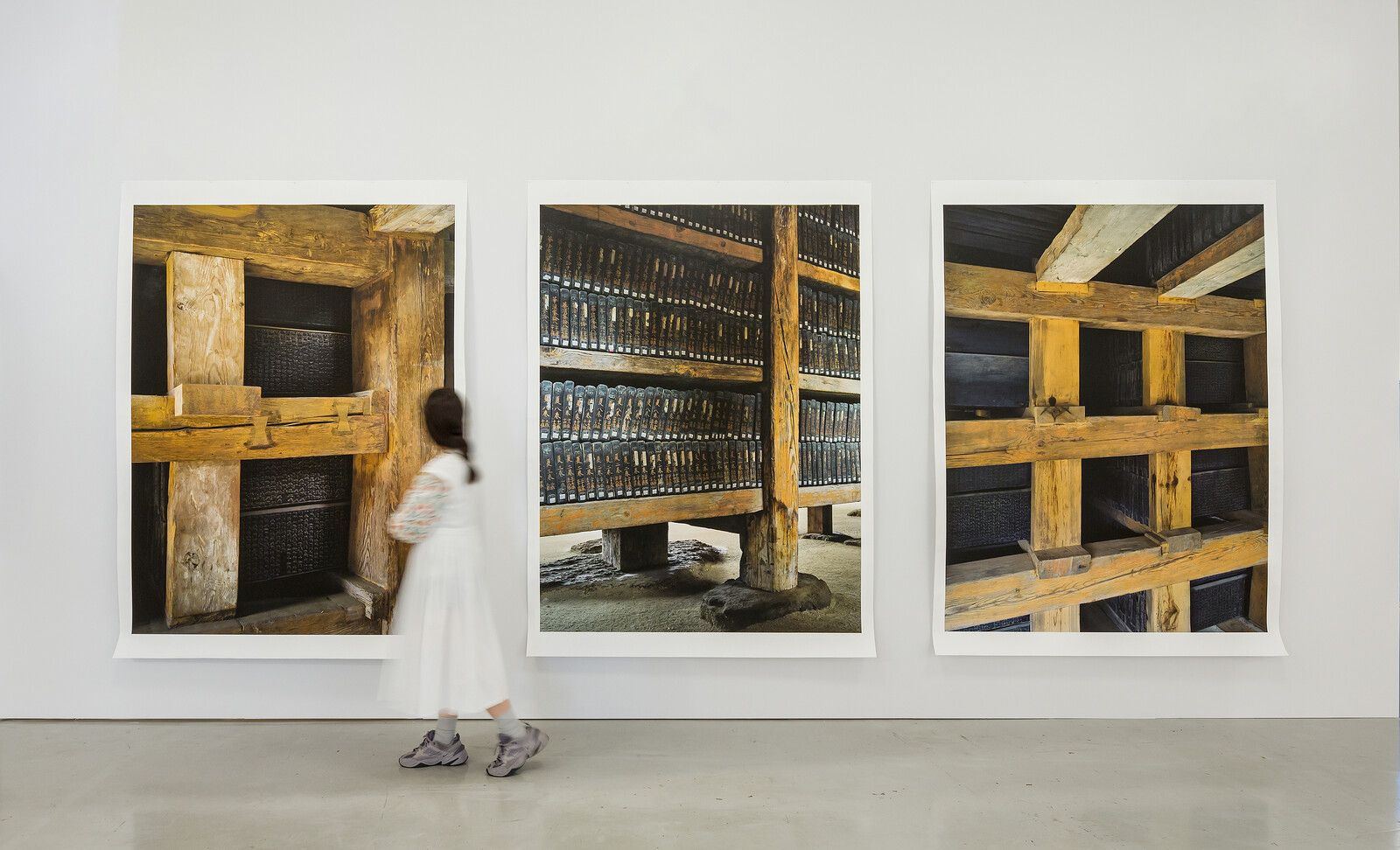We enter the terrain at sunset. It is silent, and even the water in front of us does not give away any movement. Along the dusty entrance, a wall is lined with fish pots, blackened from the open fire. Mosquitos have now discovered us, and start seizing upon the fresh arrivals. Further down the road, several cabins are set between the trees. Their exteriors are rough, patches of bark peeling off the logs, a lost-and-found door frame mounted in. While the cabins appear rather familiar, it is not clear whether they are reminiscent of an abandoned bush settlement, the encampment of a doomsday preppers community, or simply a set of somewhat folkloristic recreational lodges.
It is July 2019. We have come to this remote location—at trilateral no man’s land, whose Serbo-Croatian name curiously translates to “The Abyss”—to discuss the ten years ahead of us and the future of the practices of collective housing and commoning we have been busy setting up. The terrain and a suspiciously vast wooden kitchen area seemingly anticipate a large gathering. An old supermarket freezer filled with fish and meat hums away, on its glass top casually sits a disposed pair of heavy-duty leather gloves and grinder disks. All around us is low-tech, without frills. A sign reads “Ecologic Workshop.” Online, we learn about the alarming rate of Taiga wildfires from Alaska to Siberia, and of the collapse of biodiversity. Overhead, an old yellow Antonov double-decker crop duster does multiple raids on the last mosquitos holding out in the marshland behind. While we sit down to work, the electricity suddenly fails. It triggers us to wonder: are we pre- or post-apocalyptic? Over the next days, we won’t be able to make up our minds.
“To begin with, you are unnecessary”
Ten years—the window of time given before climate change runs off in an irreversible direction if no drastic action is made. We are in the midst of a system “runaway.” Two years ago, in July 2017, New York Magazine featured David Wallace-Wells’s article “The Uninhabitable Earth,” exploring worst-case scenarios of climate change. The author opens with the words: “It is, I promise, worse than you think. If your anxiety about global warming is dominated by fears of sea-level rise, you are barely scratching the surface of what terrors are possible, even within the lifetime of a teenager today.”1 While not exactly teenagers anymore, we feel substantial parts of those worst-case scenarios are currently becoming tangible in our very own cities. Mediterranean summers in Rotterdam, no-go heat islands in the city centres of Split and Belgrade, thunderstorms with forty lightning strikes a minute, infrastructure crumbling under the impact of violent weather events, the changes of wind patterns. Killjoy climate justice. An absurdity propelled by no-deal agreements.
Other aspects of the system—a system that seems to have parted us, to have left us behind, exposed, vulnerable, and unaccounted for—are also spinning out of control. The blogger Anne Amnesia has aptly described this situation: “From where I live, the world has drifted away. We aren’t precarious, we’re unnecessary.”2
We experience the effects of advancing (job) mobility and flexibility, with many of our peers working as self-employed, “creative entrepreneurs,” whether they want to or not. Against a backdrop in which a substantial portion of jobs is about to get automated in the coming years, we’ll only be in service as long as we’re cheaper than the robots haunting us. Housing has become the ultimate commodity. The apartment—as the physical site of our frenzied mobility and flexibility—has become the focal point of a financialized, real-estate-driven urban economy. We experience how access to flows of resources (energy, food) or support systems (healthcare, education) is moving beyond being self-evident. What is our collective response?
While the past age of “modernization” rolled out the universal infrastructures across our cities and societies that are responsible for doomsday to come, the current era puts us on the brink of Balkanization: enclaves, parallel societies—opportunities for the “haves,” the leftovers for the rest. In front of our eyes today, cities are splintering in competing communities, each foremost catering for themselves.
“I did not know the world is so big”
While this horizon of an “unnecessariat” has started holding ground on a day to day basis, it has pushed us to explore different (professional) paths. The cities in which we live—Rotterdam, Split, and Belgrade—provide ample ground. Take Rotterdam, a city once characterized by a vast working-class feeding the world’s largest port (and vice-versa). Yet today, the city is defined by two distinct operations: harbor automation, leaving no need for workers, and the globalization of the urban economy towards high-end real-estate development (the likes of “concierge residential living”) and the advanced service “industry.” For those who cannot, or do not seek to participate in speculative urban development schemes, there is little space left. Over the past few years, real-estate prices in traditionally working-class neighborhoods in the city’s north have increased threefold. Keeping one’s foot in this city is increasingly perilous.
Split, another port city, has over much of the last century developed around shipping, shipbuilding, and other industrial activities. But in recent years, it has been reinvented as a tourist hub, servicing an increasing armada of short-stay visitors. Most of the inner city is put up for rent on hospitality platforms (Airbnb and the like), with its residents challenged to find a place to live during the tourist season. How can a city survive on such a non-productive economy, one that diminishes the local population to low-skilled and servile work power?
In Belgrade, most households struggle to make ends meet on one of the lowest incomes of Europe, while the attention of the government is focused on a spectacular waterfront development. The majority of new apartments built over the past years have not been intended for living in, but kept as speculative vehicles. At the same time, the young pool of workers in the city’s service and creative “industry” is working on project-basis or zero-hour contracts. Their future is running out, and the majority of them seek a way out elsewhere. Yet in the shadow of projects like Belgrade’s waterfront development, a society of those who have been left behind is developing, where the unnecessariat drifts together. And as Anne Amnesia states: “what’s worst of all, everybody who matters seems basically pretty okay with that.”3
Almost ten years ago, following the escalation of the global financial crisis, we set our paths following a hunch: there is an end to this broken system. In the 2017 article “The Big Mystique,” sociologist and political economist William Davies frames the urgency like this:
The problem with viewing the future as territory to be plundered is that eventually we all have to live there. And if, once there, finding it already plundered, we do the same thing again, we enter a vicious circle. We decline to treat the future as a time when things might be different, with yet to be imagined technologies, institutions and opportunities. The control freaks in finance aren’t content to sit and wait for the future to arrive on its own terms, but intend to profit from it and parcel it out, well before the rest of us have got there.4
Our collective endeavors over the previous decade were grounded in the conviction that it is necessary to find ways out of architectures and urban developments that are in themselves “toxic”: endangering the populations of the cities they act upon, making economies more volatile and speculative, and overstretching planetary boundaries with the products they generate. We set out to generate the systems and infrastructure necessary to construct collective futures on the ruins of a broken system. Most of what we did started stubbornly, doing what seemed necessary to be done at the time.
In Rotterdam, for instance, immediately following the market crash, an entire pool of buildings became a financial burden to their owners. In this context, we set out to use those sites as starting points to build new communities, new ways of living, working, and new forms of economic reproduction. The resulting network, City in the Making, counts a growing number of buildings, workshops, commoned spaces and activities intended as “training grounds” for beyond their temporary existence (most of the spaces were only available for a relatively short period of time, between three to ten years). They are stepping stones towards making these spaces and models of community ownership more lasting.
In Belgrade, where living space has equally come under threat, civic association Who Builds the City is developing a novel kind of affordable and cooperatively owned apartment buildings, ones that include community spaces and shield their residents from the perils of individual mortgages. This will lead to the first pilot building, with a potential to snowball an entire ecosystem of affordable, community-owned spaces in the city.
These activities have forced us to delve into unexpected fields of knowledge, to become ad-hoc finance experts, autonomous energy systems pioneers, self-styled “business developers,” and more. Luckily, we are not alone in these endeavors. Along the way, we discovered daring initiatives that reinvent the world of finance and banking, like the Cooperative for Ethical Financing (ZEF) in Zagreb. An ecosystem is already emerging between such initiatives, propelling collaboration, upscaling, and commoning. We did not know the world is so big.
Seeking different working conditions, horizontal collaborations, open protocols, and forms of participation in cooperatives is being revived by generations of younger architects. This way of producing architecture stands in stark contrast with the armies of interns, vertical hierarchies, or short-lived ambitions that characterize most of the profession.
“There is nothing idle about cooperatives”
When facing a set of obstacles (like the lack of available finance) to roll out new cooperative housing projects in Belgrade, we discovered that in capital cities throughout Central and South-eastern Europe, other groups were facing the same issues. In 2017, Who Builds the City, Rákóczi Collective from Budapest, Zadrugator from Ljubljana, and the Cooperative for Ethical Financing / Cooperative Open Architecture from Zagreb formed the MOBA Housing Network. The factors that hinder the development of collective affordable housing solutions locally have common, systemic causes.
The network’s name, MOBA, derives from a south Slavic term to describe “self-build through mutual help.” Yet contrary to twentieth century forays into “self-build” architecture, what we “self-build” is an institutional framework to attract, channel, and manage financial flows for new housing cooperatives that enable lower-income populations in the region to collectively access affordable housing. MOBA recently completed an investment portfolio to seek partners—alternative, ethical and regionally operating banks, impact investors—to finance the realization of five pilot projects.
Initiatives coming together under MOBA have been launched by architects, sociologists, ethical finance experts, and social organizers from a generation of people who grew up in the crisis of post-socialist transition, increasingly confronted with housing insecurity and unaffordability. The network functions on a participatory basis, addressing both conceptual issues and practical steps to be made. This requires venturing into yet-unknown fields of expertise. We have gotten intimate with business-development plans, become ad-hoc experts in Life Cycle Cost Analysis, grasped the workings of shares and investment funds, prospected becoming financial deal-brokers, and explored setting up a revolving investment fund.
With City in the Making in Rotterdam, we experience a similar trajectory by being part of Vrijcoop, a Dutch pioneer of the German Mietshäuser Syndikat that provides affordable and non-speculative housing to its members by taking real-estate indefinitely out of the market. And in dialogue with Community Land Trust Brussels about ways to tackle the rising impact of land prices on housing projects, we have started exploring the possibility of creating a “land bank.”
These efforts are often networked, emergent, and demand massive amounts of energy. Bank loans for cooperative housing are hardly available; bids to take property out of the market compete with regular profitable offers; legal frameworks are often normative but merely supportive to novel approaches; building trust within the groups takes incredible, unexpected amounts energy; long-term commitments are countered by the everyday challenge of providing for rent and living; etc. As a result, these efforts sometimes seem to have a limited impact. Pioneering is often an erratic process, and its outcomes depend on time-demanding collective and personal efforts that often do not find ways in upscaling to a city or broader community level. To get out of this shadow and provide operating alternatives, we have to go beyond “islands of misfits.”
“I am afraid I will be doing the same thing ten years from now”
Back in The Abyss, the conversation on where we will find ourselves ten years from now moves from fatalism to optimism and back. It is assuring to know that one is not alone in these thoughts, and at the same time, alarming to realize that we encounter the same nightmare: that in ten years, not enough will have changed. That the same wheels that perpetually drive us into a crisis will keep on spinning. That the space for us, in our cities, will continue to diminish, with little left for generations to come. A nightmare in which we are one step older, but still far from a secured space to live, a living income, an environment that provides for mutual care—a future not plundered.
If this is the nightmare that we will wake up to—the same “old” broken system—any attempt to speak of a collective city will remain futile. If we are to wake to a different place ten years from now, we will have to acknowledge the following: at the core of this broken system is the premise that our dominant economy (only) functions in pursuit of perpetual growth. And as long as we are ignorant to the impossibility of limitless growth on a finite planet, nothing substantial will change. The mantra of sustainability—reduce, reuse and recycle—will not be enough to fill this missing core. In order to “ecologize” politics, we will have to politicize the ecology, radically.
The islands of collectivity that we have been setting up contribute to reframing the tools of architecture in the face of this toxic environment. Instead of reuse, we hack. We hack the blind spots of the real-estate market in which our efforts would otherwise only serve a speculative revenue spiral. We hack the blind spots of financial institutions to create grass-roots capital providers with a politically different DNA, to ensure that we can shift from capital accumulation to capital reproduction. Instead of recycle, we dismantle. We dismantle traditional economic relations to reassemble them into operating ecosystems at the mutual benefit of their participants. We dismantle ownership in favor of the common sharing of resources, creating internal economic circles. Traditional structures get reappropriated as a resource to build up a new relationship of empowerment that does not depend on their credibility to either market or personal successes. And finally, instead of reduce, we cease. That is what architects need to do in the face of the coming storms: just cease to build, endlessly.
In the end, the planet will keep spinning without us. What climate debate and collectivity have in common is that they are both rooted in economic relations. They both reproduce the (im)possibility of stepping beyond the known paths. As long as we do not aim to change our relationship to perpetual growth, we will wake up in the city of fragmented and antagonizing collectives, instead of a collective city.
Collectivity is a collaboration between e-flux Architecture and the 2019 Seoul Biennale of Architecture and Urbanism within the context of the “Collective City” thematic exhibition, and was made possible thanks to the support of the Creative Industries Fund NL.












